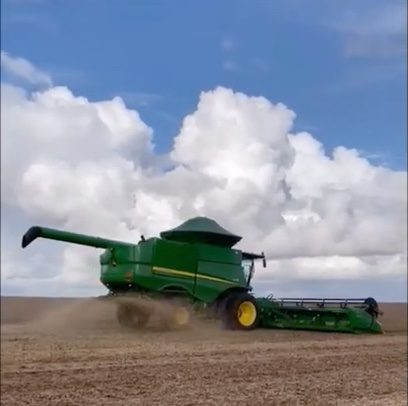A fleet of machines takes the field during the busy season at Charles Peeters’ farming operation in Brazil.
Peeters farms about 8,649 acres in Goiás state, located in central Brazil. His parents started the family farm in 1985, and Peeters’ father became a pioneer in the adoption of no-till. He also led the way in production of corn as a second crop, which is what Peeters is doing in this video shared by Global Farmer Network.
The process starts with the combine out in the field harvesting soybeans. Peeters then spreads brachiaria grass seeds and no-tills corn into the grass seed. The result is 3 machines running in the field at the same time and a successful second crop of corn.
Peeters says he’s always looking for ways to do more sustainable practices. His farm participates in a group that conducts its own research into better technologies and crop management systems for the sustainability and efficiency of the farm business.
In addition to no-tilling for the past 31 years, Peeters’ soil is permanently covered by cover crops. The farm produces about 15 tons of grains per hectare per year and conserves at least 10 tons of dry matter over the soil, protecting soil biological activity and biodiversity, and mitigating water erosion.
Related Content
Record-Breaking Soybean Harvest Projected for Brazil: Brazil, the world leader in soybean production, is on track to produce 5,172 million bushels of soybeans in 2021-22.
10 Tips for No-Till Success in South America: Adoption of no-till and conservation agriculture practices has boomed in South America since it was first introduced in the 1970s.
Black Oats Offer No-Tillers High Biomass as Cover Crop: This shorter cultivar, very popular in Brazil, has great potential in the U.S. as a cover crop for weed suppression, disease cycle breakup and erosion control.
The No-Till Passport series is brought to you by Martin Industries.
Since 1991, Martin Industries has designed, manufactured and sold leading agriculture equipment across the U.S. and Canada. Known for Martin-Till planter attachments, the company has expanded to include a five-step planting system, closing wheel systems, twisted drag chains, fertilizer openers and more in their lineup. Their durable and reliable planter attachments are making it possible for more and more farmers to plant into higher levels of residue.








